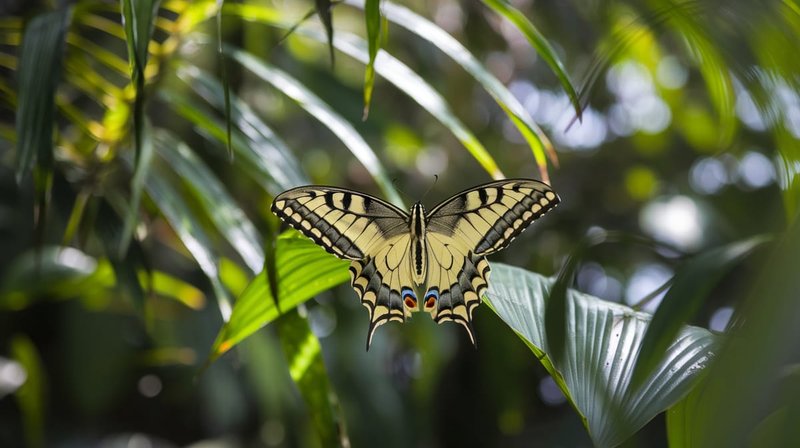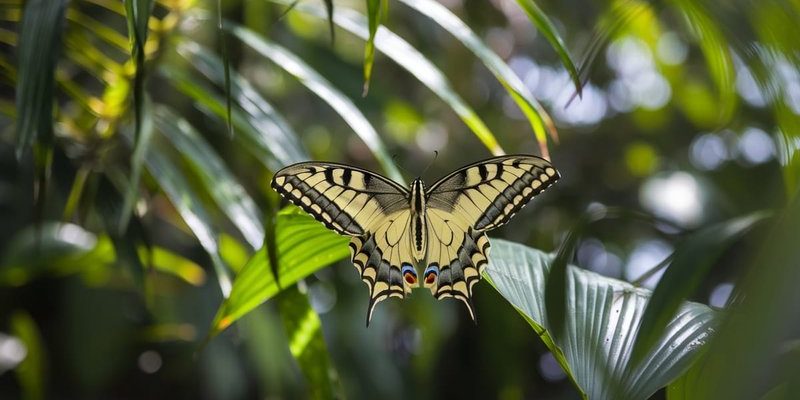
So why should we care about these gorgeous creatures? Well, they play a vital role in our ecosystem, acting as pollinators and indicators of environmental health. But just like any living being, they aren’t immune to challenges. Let’s dive into the various predators and threats the swallowtail butterfly encounters in its lifecycle.
Natural Predators of the Swallowtail Butterfly
Swallowtail butterflies have a few key predators that are always on the lookout for a meal. Birds are among the most prominent threats. Many bird species—like sparrows and blue jays—find these butterflies irresistible. The bright colors of the swallowtail can unfortunately make them more noticeable, drawing in hungry birds.
In addition to birds, there are other creatures that pose a risk. Frogs and lizards, for example, are more than happy to catch a swallowtail resting on a plant. Even some larger insects, such as dragonflies, can give these butterflies a run for their money! Nature often feels like a game of survival and, unfortunately, swallowtails are not always the winners.
To protect themselves, swallowtail larvae (caterpillars) have developed some clever strategies. For instance, while they’re munching on leaves, they can take on the appearance of twigs or even bird droppings to blend into their surroundings. This camouflage is a brilliant way to evade potential predators.
Environmental Threats Facing Swallowtail Butterflies
While predators are a significant danger, swallowtail butterflies also contend with environmental threats. One of the biggest issues they face is habitat loss. Urbanization and agriculture can destroy the natural environments where these butterflies thrive. Imagine if you had to pack up your home because a big development was happening in your neighborhood—that’s exactly what these butterflies are up against!
Another serious concern is pesticide use. Chemicals designed to eliminate pests can also impact butterflies, leading to population declines. It’s a classic case of unintended consequences, where efforts to protect crops can harm the very pollinators that help those crops grow.
Climate change is another overarching threat that affects swallowtail butterflies. As the climate shifts, it alters their habitats and the availability of the plants they rely on. This can impact their breeding and feeding patterns. For example, a prolonged drought could dry up the flowers they depend on for nectar, making it extremely challenging for them to survive.
The Role of Invasive Species
Invasive species are non-native plants or animals that can disrupt local ecosystems, and they are another threat to swallowtail butterflies. When invasive plants take over, they often crowd out the native plants that swallowtails depend on. For instance, if an invasive weed grows where milkweed—vital for certain swallowtail caterpillars—used to flourish, it can lead to a significant decline in butterfly populations.
Moreover, some invasive insects can directly prey on swallowtail caterpillars or compete for resources. This means that the struggle for survival becomes even tougher. It’s like trying to navigate through a crowded party where everyone is stepping on your toes.
To combat this issue, conservation efforts are critical. By removing invasive species and restoring native plants, we can help create a more welcoming environment for swallowtails and other native insects.
Human Impact and Conservation Efforts
Humans play a significant role in both threatening and protecting swallowtail butterflies. Urban development, pollution, and climate change all stem from human activities and have dire consequences for these delicate creatures. However, the good news is, we also hold the power to make a difference.
Many organizations are dedicated to butterfly conservation. These groups work to educate the public about the importance of conserving natural habitats and planting native species. For example, creating butterfly gardens can provide food and shelter for these butterflies, helping them thrive. If every backyard could host a small sanctuary, imagine the collective impact it could have!
Additionally, promoting organic gardening practices can reduce pesticide use, which directly benefits butterflies. Taking steps to create a healthier environment ultimately leads to healthier butterfly populations.
Predation Strategies and Defense Mechanisms
Swallowtail butterflies have some fascinating defense mechanisms to counteract predators. One of their most effective strategies is called aposematism. This means they have bright colors to signal to potential predators that they might be toxic or taste bad. This visual warning can deter birds and other predators from taking a bite.
Some species even mimic other insects that are known to be harmful. For instance, certain swallowtail butterflies resemble toxic species, which can trick predators into thinking they should steer clear.
Additionally, during the caterpillar stage, many swallowtails utilize chemical defenses. Some produce toxins from the plants they eat, making them unappetizing to birds. This clever adaptation can significantly increase their chances of survival until they transform into their colorful adult forms.
Swallowtail butterflies are incredible creatures that add beauty and vitality to our ecosystems. However, they face numerous challenges from predators, environmental threats, and human impacts. Understanding these issues is the first step toward making a difference. By supporting conservation efforts and creating friendly habitats, we can help ensure that these stunning butterflies continue to grace our gardens and parks for years to come.
Swallowtail butterflies remind us that beauty often comes with a struggle. When we admire them flitting about in nature, let’s also remember the challenges they confront daily. By fostering awareness and taking action, we can protect these enchanting insects and the delicate balance of the ecosystems they inhabit.

